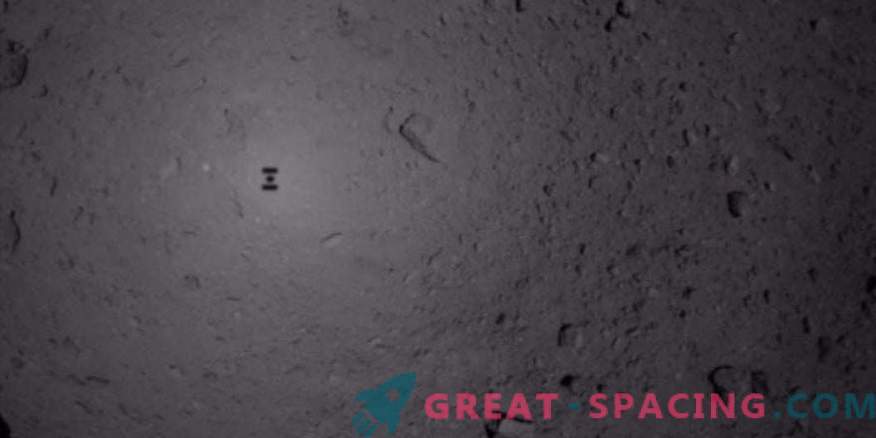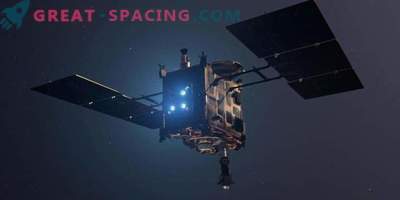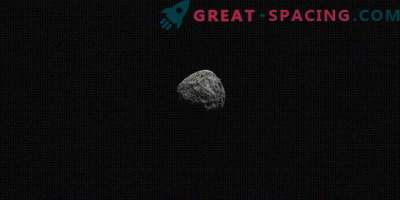
The Japanese spacecraft Hayabusa-2 received this photo while descending to asteroid Ryugu on February 21, 2019. On the surface you can see the shadow of the probe.
The Japanese probe was able to extract the first sample of the asteroid rock. On February 21, the Hayabusa-2 spacecraft captured pieces from the 900-meter-long asteroid Ryugu. For this, we had to go down and shoot a special “bullet” (0.2 ounces) at close range and collect material with a special device.
The ship worked exactly on orders, but had to wait a few hours to confirm that the bullet had really fired, and was able to collect samples. Hayabusa-2 started in December 2014 and arrived at Ryugu in June 2018. The mission came into contact with the surface several times, since in September the probe dropped two jumping rovers, and later lowered the MASCOT landing gear.
The MASCOT battery was able to work for 17 hours on the surface, which slightly exceeded the expected lifetime. But the rovers are still working. The main goal of Hayabusa-2 is to help researchers understand the early history and evolutionary path of the solar system, as well as understand the role that carbon-rich asteroids could play in the emergence of life. The resulting samples were the main clue. The material should be delivered to Earth in December 2020, after which researchers from around the world will be able to begin a detailed study.
In the coming weeks and months, the ship will extract two more samples. The second flight will repeat the first procedure, but the third is different. Hayabusa-2 will also fire a copper shell, wait for the dust to clear, and collect material from the formed crater. This will allow to take subsurface samples without contamination.
The first test capture was the culmination of the maneuver of the descent and the collection, which spent 3 days, although initially planned to perform the procedure in October 2018. The fact is that the photographs of the probe displayed a complex, uneven surface, so I had to search for a safe place for a long time to take a sample.
Hayabusa-2 is not the only modern asteroid research mission. NASA's OSIRIS-REx rotates around the carbon-rich asteroid Bennu from December 31st. In mid-2020, he must obtain a sample, and in September 2023 to deliver it to Earth.











































